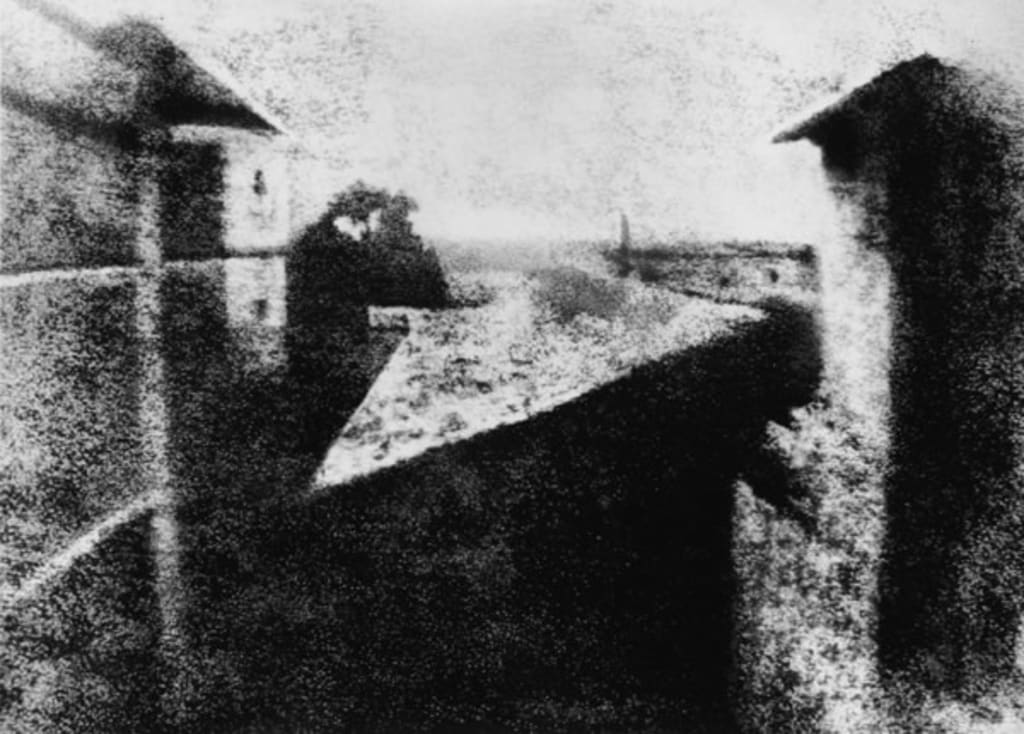
The world's first photograph was taken by Joseph Nicéphore Niépce in 1826 or 1827, depending on the source. The photograph, titled "View from the Window at Le Gras," was captured on a pewter plate coated with bitumen and exposed to light for several hours through a camera obscura. The resulting image is a view of the rooftops and surrounding countryside from Niépce's studio window in Saint-Loup-de-Varennes, France. The image is considered a landmark in the history of photography and is now on display at the Harry Ransom Center at the University of Texas at Austin.
The history of photography dates back to the early 19th century when several inventors and scientists experimented with light-sensitive materials and lenses to capture and record images. Over the years, photography has undergone significant technological advancements, from the earliest camera obscuras to modern-day digital cameras and smartphones. This article will explore the fascinating history of photography from its earliest beginnings to the present day, covering major milestones, notable inventors, and technological breakthroughs.
Early Experiments with Light and Optics
The origins of photography can be traced back to ancient civilizations, where the concept of the camera obscura was first discovered. The camera obscura is a natural optical phenomenon that occurs when light passes through a small aperture or hole and creates an inverted image on the opposite surface. This principle was used by early artists to create realistic and accurate drawings of landscapes and still-life scenes.
In the 17th century, several inventors and scientists began to experiment with the camera obscura and lenses to project images onto a screen or paper. These early experiments laid the foundation for the development of photography as we know it today.
The First Photographic Process
The first true photographic process was invented by Joseph Nicéphore Niépce in 1826 or 1827, depending on the source. Niépce was a French inventor and scientist who had been working on a method of capturing and preserving images since the late 18th century. His process involved coating a pewter plate with bitumen, a light-sensitive material, and exposing it to light through a camera obscura. The plate was then treated with a solvent to dissolve the unexposed bitumen, leaving a permanent image on the plate.
The resulting photograph, titled "View from the Window at Le Gras," is considered the first true photograph in history. The image is a view of the rooftops and surrounding countryside from Niépce's studio window in Saint-Loup-de-Varennes, France. Although the process was slow and cumbersome, it marked a major breakthrough in the development of photography.
Daguerreotype and Calotype Processes
In 1837, Louis Daguerre, a French artist and inventor, announced his invention of the daguerreotype process. This process involved exposing a polished silver plate to iodine vapor, which created a light-sensitive surface. The plate was then exposed to light through a camera lens and developed using mercury vapor. The resulting image was a highly detailed and precise photograph that was widely popular in the mid-19th century.
Around the same time, another inventor, William Henry Fox Talbot, was working on a similar photographic process called the calotype. The calotype involved coating a sheet of paper with a light-sensitive emulsion and exposing it to light through a camera lens. The paper negative could then be used to create multiple positive prints, making it a more practical and efficient process than the daguerreotype.
Photography Goes Mainstream
By the 1850s, photography had become a mainstream hobby and profession, with studios and photographers popping up in major cities around the world. Improvements in photographic technology, including faster lenses and better film emulsions, made it easier and more accessible for people to take photographs.
The introduction of roll film in the late 19th century made photography even more accessible, as it eliminated the need to load and unload individual plates or sheets of film. George Eastman, the founder of Kodak, introduced the first flexible roll film in 1884, revolutionizing the way people took photographs.
The Birth of Photojournalism
In the late 19th and early 20th centuries, photography began to play an increasingly important role in journalism and news reporting. Photographers like Jacob Riis and Lewis Hine used their cameras to document the living conditions






Comments
There are no comments for this story
Be the first to respond and start the conversation.